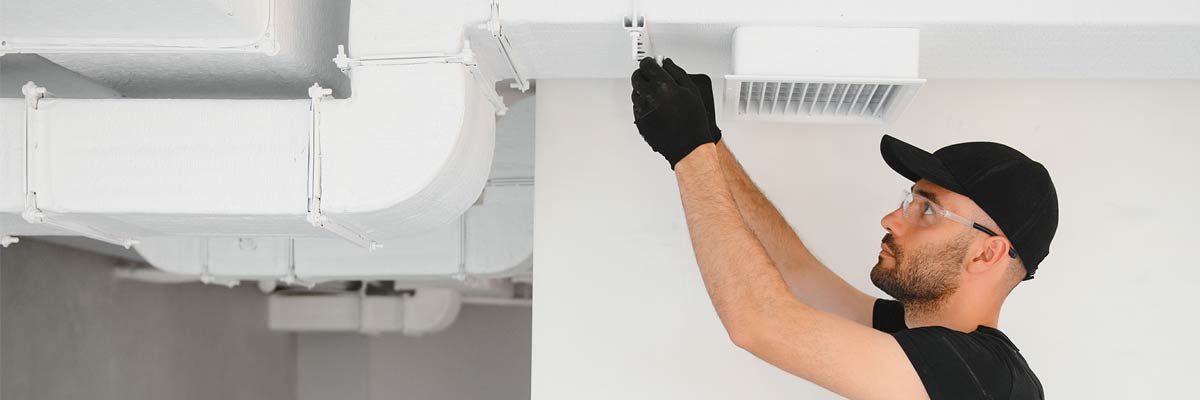Best Practices for Installing an ERV Unit in a New Building
Ensuring the proper installation of Energy Recovery Ventilation (ERV) units is crucial for optimal performance, indoor air quality, and compliance with Australian standards. Below is an expanded discussion on key installation considerations, referencing the National Construction Code (NCC) 2022, Indoor Air Quality (IAQ) standards, and seismic requirements.
1. Distance Between Fresh Air Intake and Exhaust Air
Maintaining adequate spacing between the fresh air intake and exhaust air outlet is crucial to preventing cross-contamination (short-circuiting), which can reintroduce stale exhaust air into the fresh air supply. This ensures that the ERV delivers clean, uncontaminated air to maintain IAQ.
NCC 2022 Reference:
Section F6 (Air Quality and Ventilation) of the NCC Volume One emphasizes adequate ventilation to maintain IAQ. While it does not specify exact distances, it references AS 1668.2-2012 (Ventilation Design), which recommends a minimum separation of 3 meters between intake and exhaust points for mechanical ventilation systems, adjusted based on airflow rates and prevailing winds.
IAQ Standards:
The Australian Standard AS 1668.2 and WHO IAQ Guidelines stress minimizing the recirculation of pollutants. A greater distance (e.g., 6-10 meters) may be required in urban or industrial areas with high pollutant levels.
Practical Consideration:
If a 3-meter separation is not feasible, consider placing the intake and exhaust on opposite sides of the building or at different heights. Computational fluid dynamics (CFD) modeling can be used for complex sites to verify separation efficacy.
2. Filtration: Purpose and Sizing
Proper filtration protects the heat exchanger (HEX) core from dust, debris, and microbial buildup, extending its lifespan while also ensuring IAQ by removing particulates, allergens, and pollutants. Filter efficiency and size must match airflow rates (liters per second, L/s).
Why Filtration is Important:
- HEX Protection: Clogged heat exchanger (HEX) cores reduce efficiency and increase energy consumption.
- IAQ Improvement: Filters remove PM2.5, PM10, and biological contaminants, aligning with health standards.
NCC 2022 Reference:
Section F6.3 requires ventilation systems to mitigate harmful contaminants. Filters are implicitly required to meet this goal.
IAQ Standards:
AS 1668.2 recommends filters meeting ISO 16890 (e.g., ePM1 50% for fine particles) or MERV 8-13 (ASHRAE 52.2 equivalent). For high-pollution areas, higher ratings (e.g., MERV 13) are advised.
Practical Consideration:
Pre-filters (e.g., MERV 6) can extend the life of higher-efficiency filters. Inspect filters every 3 to 6 months.
3. Drainage (If Required)
ERVs managing high humidity require a condensate drain to remove excess moisture from the HEX core, preventing mold growth and water damage.
Practical Consideration:
Install a drain pan with overflow protection and a P-trap to prevent sewer gas backflow. In dry climates, drainage may not be needed—verify with the manufacturer. Clean quarterly in humid regions.
4. Vibration Isolation
Proper vibration isolation minimizes noise transmission and structural stress. Two common setups are ceiling-suspended and floor-mounted, with seismic considerations varying by Australian state.
Options:
- Ceiling Suspended: Use spring hangers or rubber isolators (e.g., 25 mm deflection).
- Floor Mounted: Install on a concrete pad with neoprene pads or spring mounts.
Seismic Standards:
NCC 2022 Section B1 (Structure) references AS 1170.4 (Earthquake Actions). Seismic requirements depend on the region’s hazard factor (Z):
- Low Risk (e.g., Tasmania, Z = 0.03): Basic isolators suffice.
- High Risk (e.g., South Australia, Z = 0.11): Secure with seismic restraints (e.g., braced mounts).
Practical Consideration:
Use flexible duct connections with isolators to further dampen vibration. Refer to local council seismic maps for precise ‘Z’ values.
5. Fan/Filter and Electrical Access
Easy access to fans, filters, and electrical components simplifies maintenance and ensures compliance with safety standards.
NCC 2022 Reference:
Section J5 (Energy Efficiency) implies serviceability for mechanical systems. AS/NZS 3000 (Electrical Installations) requires a 600 mm clearance for electrical access.
Practical Consideration:
Install the ERV with removable panels or a hinged door for filter swaps (every 3-6 months) and fan cleaning (annually). Ensure a lockable isolator switch is within reach for electrical safety.
6. Noise Reduction Best Practices
Excessive noise from ERVs can disturb occupants, so mitigation is key. Fan noise originates from the motor, blade turbulence, and airflow dynamics.
NCC 2022 Reference:
Section F5 (Sound Transmission) sets limits (e.g., 40 dB in living areas). AS 1668.2 suggests noise levels below 35 dB(A) for ventilation systems.
Best Practices:
- Insulate ducts with acoustic lining (e.g., 25-50 mm fiberglass or polyester).
- Install silencers post-ERV.
- Mount with vibration isolators.
- Choose fans with low sone ratings (<1.5 sone) or sound power levels (<50 dB(A)).
- Position ducts away from noise-sensitive areas.
7. Duct Connections to the ERV Unit
Flexible duct connections reduce vibration transmission and noise while accommodating minor misalignment.
NCC 2022 Reference:
Section J5.4 (Ductwork) requires efficient, sealed connections. AS 4254 (Ductwork) recommends flexible connectors (e.g., canvas or rubberized fabric).
8. Mounting the Units
Mounting options (ceiling-suspended or floor-mounted) depend on manufacturer approval. Some ceiling units can be mounted vertically to save space.
NCC 2022 Reference:
Section B1 requires secure mounting per AS 1170 (Structural Design). Vertical mounting must still meet seismic and load-bearing rules.
Practical Consideration:
Verify the unit’s IP rating and weight capacity. For vertical setups, ensure access to filters and drains isn’t compromised.
9. Weatherproofing
Outdoor ERVs need weatherproofing and structural integrity to withstand wind, rain, and UV exposure.
NCC 2022 Reference:
Section F1.5 mandates weatherproofing for external equipment. AS 1170.2 (Wind Actions) defines structural ratings (e.g., Region A: 41 m/s wind speed).
Practical Consideration:
Use IP54-rated enclosures (dust and water resistant) and corrosion-resistant materials. Whenever possible, install under eaves or use a weather hood for added protection.
References
- National Construction Code (NCC) 2022 – https://www.abcb.gov.au
- AS/NZS 1668.2 Ventilation Standards – https://www.standards.org.au
- Earthquake Hazard Map – https://www.ga.gov.au
Note: This document is provided by Caeli, an HVAC solutions provider, to share general industry best practices on ERV installation. While we offer expert guidance, always refer to manufacturer guidelines and local building codes for precise installation standards.

